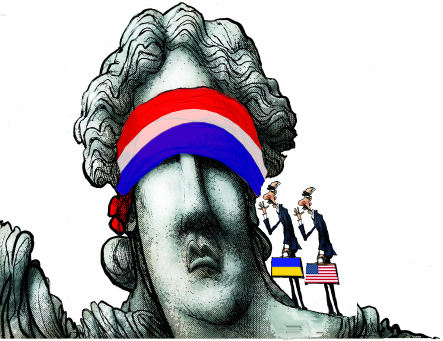

By John Helmer, Moscow
@bears_with
The Dutch Government’s trial of the Russian Government for shooting down Malaysia Airlines Flight MH17 reached new lows on Thursday when it was revealed in court that the US Government continues to conceal the satellite evidence alleged to show a BUK missile firing at the aircraft; that the release on Dutch television of thousands of telephone taps of one of the Russian soldiers accused of the shoot-down was the work of the Ukrainian Security Service (SBU) and by a source among the Dutch police and prosecutors; and, finally, that an investigating judge has decided in secret to prevent any cross-examination of the Dutch government experts responsible for reports allegedly proving the prosecution’s case.
That investigating judge was acknowledged in court yesterday to be playing a more decisive role than the president of the trial, District Court judge Henrik Steenhuis. Her name is being kept a state secret.
The hearings in the trial resumed on April 15 after Steenhuis adjourned on February 8. He will hold another session on April 16, then adjourn again until May 20. The formal trial is now scheduled between June 7 and July 9. According to Steenhuis “some investigation will take place after the [trial] hearings.”
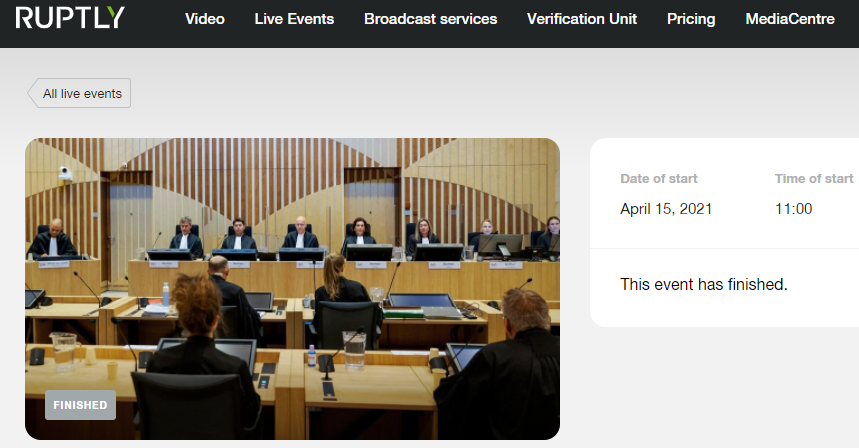
Source: https://www.ruptly.tv/
The Russian state television company Ruptly, which has been providing an archive copy of the hearings since the trial opened on March 9, 2020, now demands payment for access to their recording. Other Russian state media Sputnik, Tass, and RIA-Novosti have also reduced their coverage of the trial and halted publication of an open-access video film. For the book of the trial and the evidence, read this.
The Dutch Government provides an archive record of the hearings at the court website here. However, officials delay posting the archive record; also, the replay is technically patchy, and it was not available in time for this report. Dutch officials also prevent independent and press access to the copies of the prepared, written presentations which are distributed in the courtroom itself; judge, prosecutors and defence lawyers make few impromptu remarks, which are the standard practice in American, British and Canadian courtrooms; instead, they read from typewritten scripts.
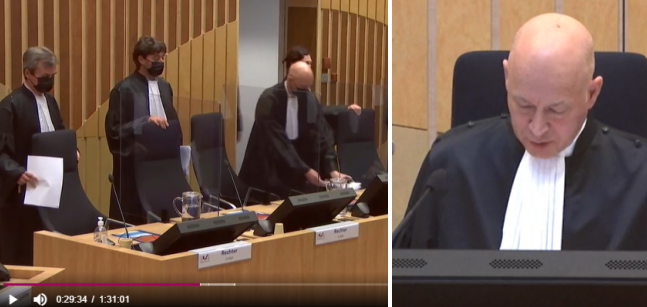
Left: Judge Steenhuis (right) and his two alternates carrying their scripts into the session of February 1, 2021. Right, Steenhuis reads from his script in the replay of the February 8, 2021, hearing.
The defence lawyers, Sabine ten Doesschate and Boudewijn van Eijck, who are being paid from Moscow to represent retired Russian Army Lieutenant Colonel Oleg Pulatov, one of the four accused, are keeping these scripts secret; Dutch lawyers say there is nothing in Dutch court procedure compelling them to do so.
The method for this report was to listen to the livestream broadcast at the court website, and take running notes. The time log references for the quotes reported are therefore approximate, not exact. Mark Metcalfe of Human Rights Investigations has also provided through his Twitter account a running precis. This is the HRI compilation of the April 15 hearing.
In his opening speech, Steenhuis revealed that all efforts purportedly made by the court, the prosecutors, the Dutch police, and the Dutch military intelligence agency to obtain the US satellite images of the alleged BUK missile firing against MH17 on July 14, 2014, have failed. This process now stretches back over six years; click to follow. Steenhuis said yesterday the process is “still under way” (Min 15).
Without this direct satellite imagery or radar records, the principal evidence on which the prosecution and judge say they rely is telephone tap records obtained by the SBU. These, according to the prosecution, contain admissions by the accused Russian soldiers charged with attacking MH17 that they arranged the movement of a BUK missile from across the border into firing position. The tapes previously released in public by Dutch prosecutors have been exposed as Ukrainian fabrications.
In yesterday’s presentation by Manon Ridderbeks, the prosecution claims to have authenticated SBU image recordings and proved there has been no tampering. According to Ridderbeks, a Swedish government investigation of the authenticity of SBU videotapes, allegedly showing the movement of the BUK missile from the border to the firing position, and then the missile contrail after firing, proves the authenticity of the records. The Swedish government investigation appears not to extend to SBU audiotapes. The Swedish report has not been provided to the defence.
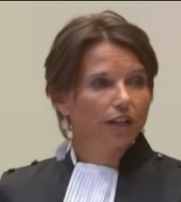
Steenhuis and Ridderbeks (right) have announced that the authentication of the SBU evidence, both audio and video, has been the responsibility of the Dutch investigating judge. Steenhuis called this judge by the male pronoun at Min 10:22. He also referred to the plural, “investigating judges”, as well as to the singular. In the hearing of February 8, Steenhuis identified the investigating judge as female.
In her script recital yesterday, Ridderbeks expressed her thanks to the investigating judge for her work. Ridderbeks called the judge a woman (Min 11:27, 11:43).
Dutch lawyers say there is no legal reason for this woman’s name to be kept secret or camouflaged by Steenhuis and the prosecution. They also say the defence lawyers have the right to reveal her name, especially since an investigation of the judge’s background may reveal conflicts of interest and ties to the police or the Dutch state potentially compromising her judgements in the case. A Dutch court source who knows the identity of the investigating judge agreed to release it, then stopped. The source is frightened.
Officials inside the police and prosecution were not afraid, however, to release audio tapes, plus forensic, interpretive and analytical documents attached to a large number of the telephone taps, to a state media organisation, the Nederlandse Omroep Stichting (NOS, Dutch Broadcast Foundation). In a programme entitled “News Hour”, the Dutch presented what they called a “reconstruction” of tapes of retired Russian Army Colonel Sergei Dubinsky, one of the four accused, whose “phone was tapped by the Ukrainian authorities. The taps are an important basis for the evidence against the perpetrators. Nieuwsuur has the audiotapes of the phone calls made by Dubinsky in the months of July and August [2014].”
“Based on those conversations, social media posts, and interviews with experts and people involved, Nieuwsuur has made this reconstruction. The separatists knew that their phones could be tapped, and often met in person, but when that is not possible, they talk on the phone.”
With a byline attributing this text to Gert-Jan Dennekamp, the NOS publication claims to have obtained “hundreds of intercepted conversations [which] paint a detailed picture of the situation at the time, the quarrelling, the theatre of war of the moment, the raw reality of a war and of the ambition to hit the Ukrainian air force.” In court yesterday, Ridderbeks referred to “thousands” of tapes. The headline in the text version of Dennekamp’s publication refers to “audio tapes of thousands of overheard conversations.”
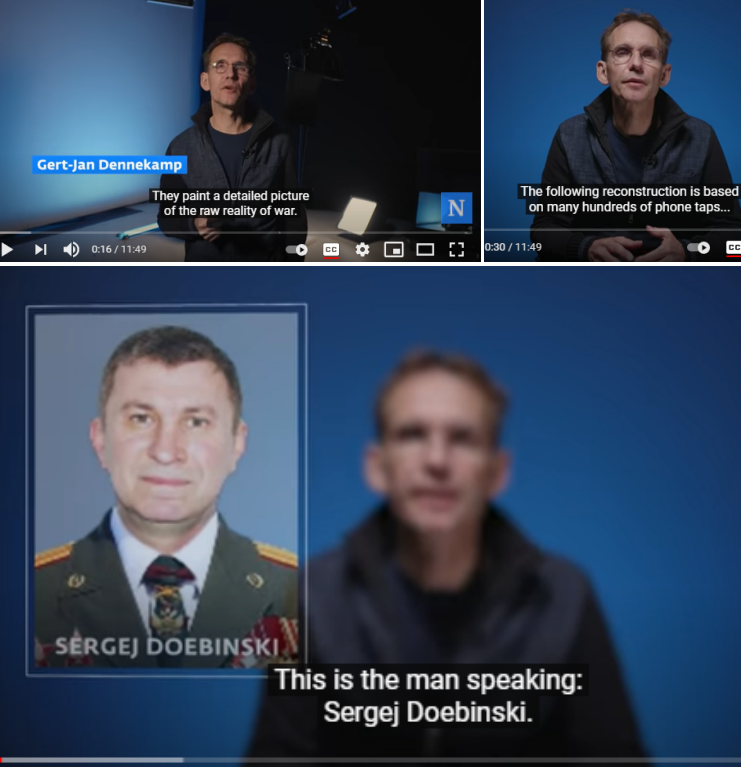
Source: https://www.youtube.com/watch?v=iUQk6i31fBc
Dennekamp has not reported before on the MH17 case in the available archive of his journalism. He is not listed as a permanent member of the NOS staff. He does not identify any of the “experts and people involved” whom he claims to have interviewed; he reports no check with any source for authentication of the tapes, nor has he or NOS contacted the defence lawyers, Pulatov, or Dubinsky. Dennekamp was told what to broadcast and publish.
The excerpts of Dubinsky’s voice on tape are very brief, and the voiceover materials, including Dennekamp’s commentary, make difficult the standard forensic methods for checks of tape tampering, inserts, cuts, and other forms of technical faking. An interpretation of the broadcast materials by a technical expert cited by a Moscow daily newspaper suggests that voice matching may be possible, and that the purpose of the leak was to expose scepticism among some Dutch officials towards the SBU. He predicted that “now the court, and not the prosecutors, will be forced to initiate a separate large examination of the new records. The trial will be drastically delayed.”
In court Judge Steenhuis referred to the NOS material, confirming he thinks it is authentic evidence. He added that the leak had not come from the court or the prosecution. “The new information [sic] was not taken from the case file” (Min 23), Steenhuis said. He was contradicted by prosecutor Ridderbeks. She told the court “some [of the tapes] are in our prosecution file.” She did not disclose if prosecutors had been shown the NOS materials by Dennekamp and his managers. According to Ridderbeks, she and her colleagues were not responsible for the leak. The tapes and documents were “not made available to a third party” (Min 100).
Ridderbeks admitted that in the four days since the NOS broadcast, she had been in contact with the Ukrainian “authorities. [They] reported to us that…a large number of the conversations were in prosecution files in Ukraine”. After acknowledging the Ukrainian source for the tapes, Ridderbeks did not say how they had “fallen into the hands” of NOS. Neither the judge nor the prosecution said they were investigating the source of the leak, or delaying the trial schedule because of it.
Instead, the defence lawyers announced they will not accept and authenticate any telephone tap or taped telephone conversation attributed by prosecutors to Pulatov, Dubinsky or the others charged in the Dutch indictment. Ridderbeks said Pulatov and the defence lawyers had already admitted Pulatov’s voice in some of the calls, but then “changed [their] tune” (Min 155). She added that the tapes in the case file were proof that “the defendants were acting in unison”, as charged. “There is no reasonable doubt that a BUK caused the downing of MH17… The telephone intercepts [prove] the defendants discussing the BUK.”
Ten Doesschate for Pulatov told the court that it had been the investigating judge who had repeatedly ruled to prevent questioning and cross-examination of experts for the “linguistic investigations” required to authenticate the SBU tapes; she had explicitly rejected checks of the telephone records as “outside the scope” (Min 152) of the case. Ten Doesschate also attacked the investigating judge for ruling that cross-examination of other Dutch experts on the BUK missile allegedly fired, its launch source and flight path, and its warhead detonation were “outside the scope.”
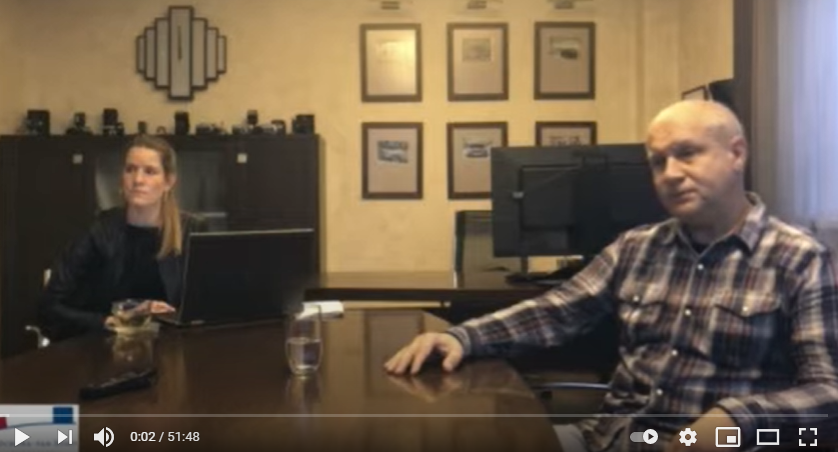
Sabine Ten Doesschate (left) with Oleg Pulatov in a videotaped interview the defence presented in court last November. Source: https://www.youtube.com/watch?v=si5TK8TjcYk For assessment of the advantage this defence presentation gave the prosecutors, read this.
The defence lawyer concluded it is “impossible therefore to make a proper forensic analysis [of the prosecution evidence] – impossible to argue a proper defence” (Min 139).
Dutch and international lawyers observing the proceedings comment that if the defence lawyers believe this, they should walk out. According to one of the sources, “perhaps they are staging, not because they have hopes of winning a verdict for Pulatov at the district court level, but because they are looking to appeal to the higher court. That will extend the time, and also the lawyers’ fees.”


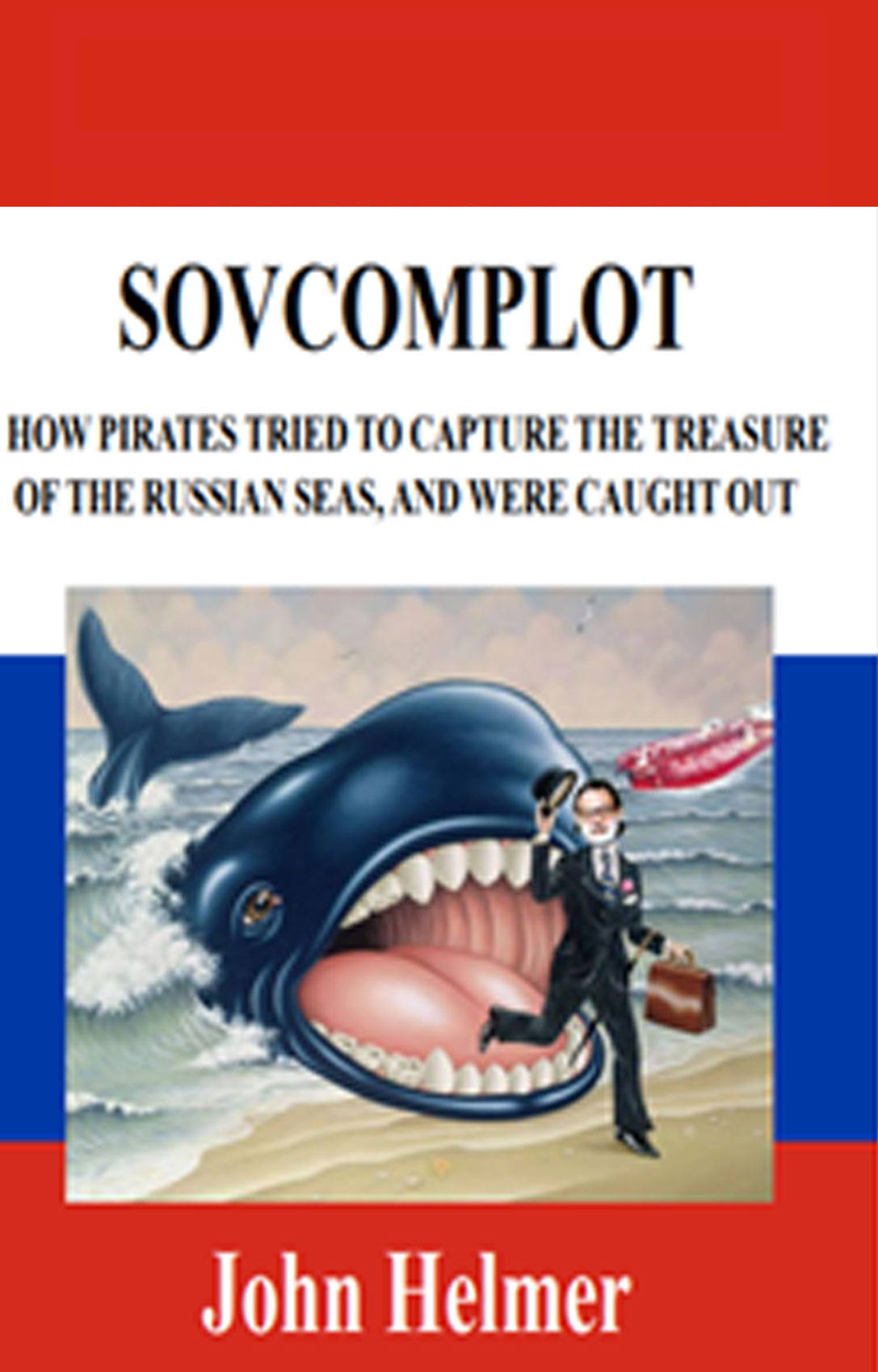



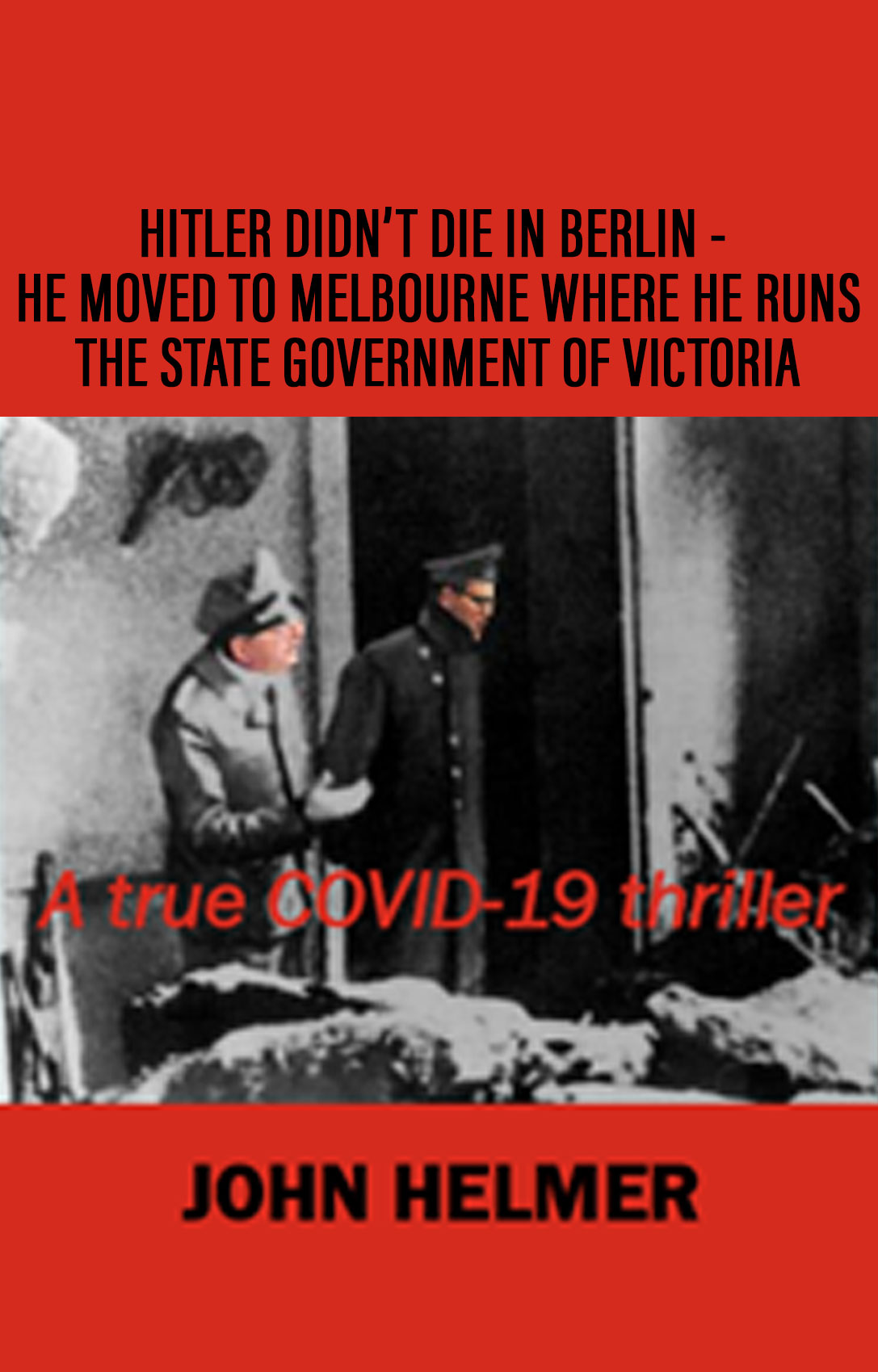
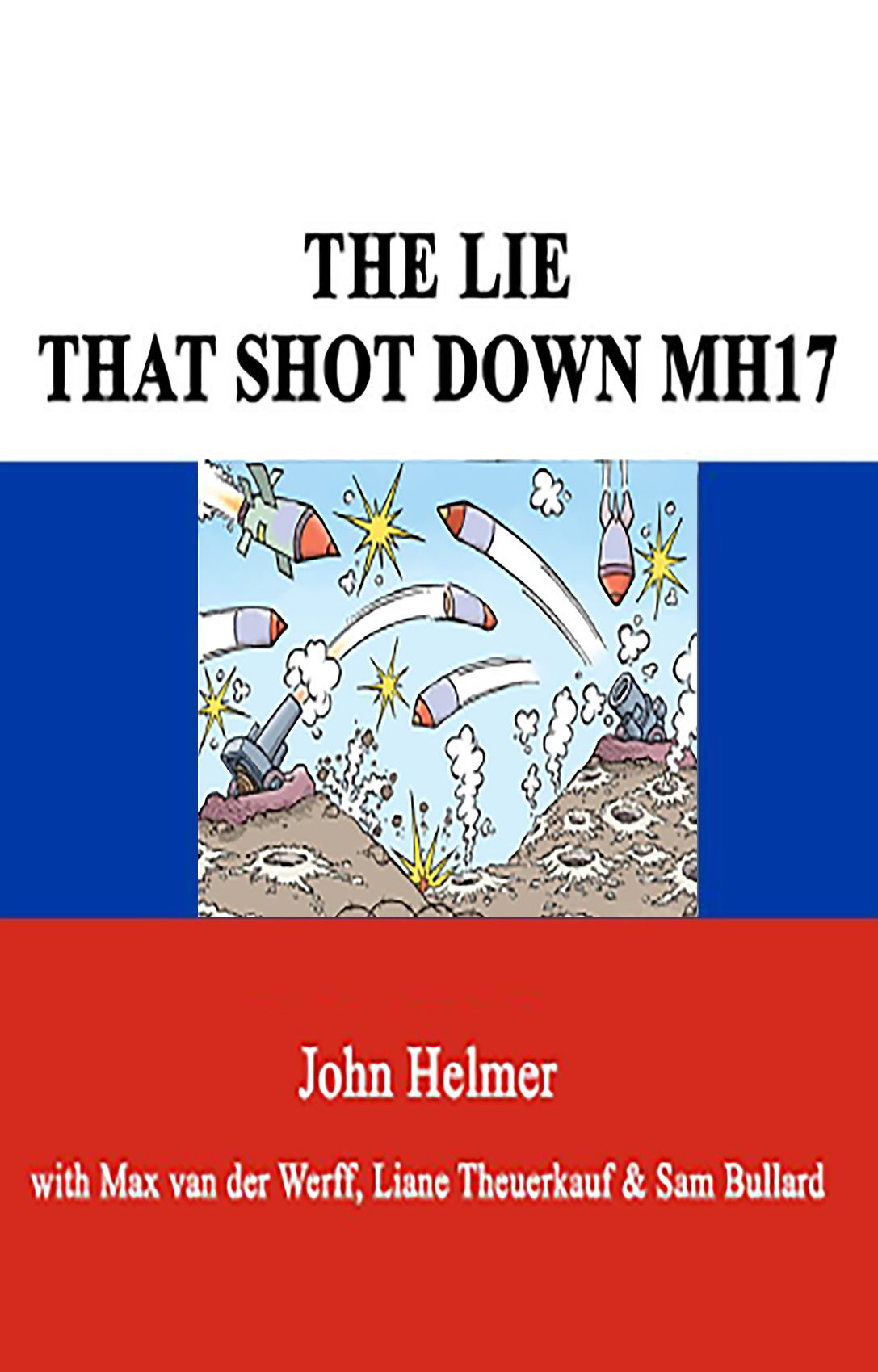
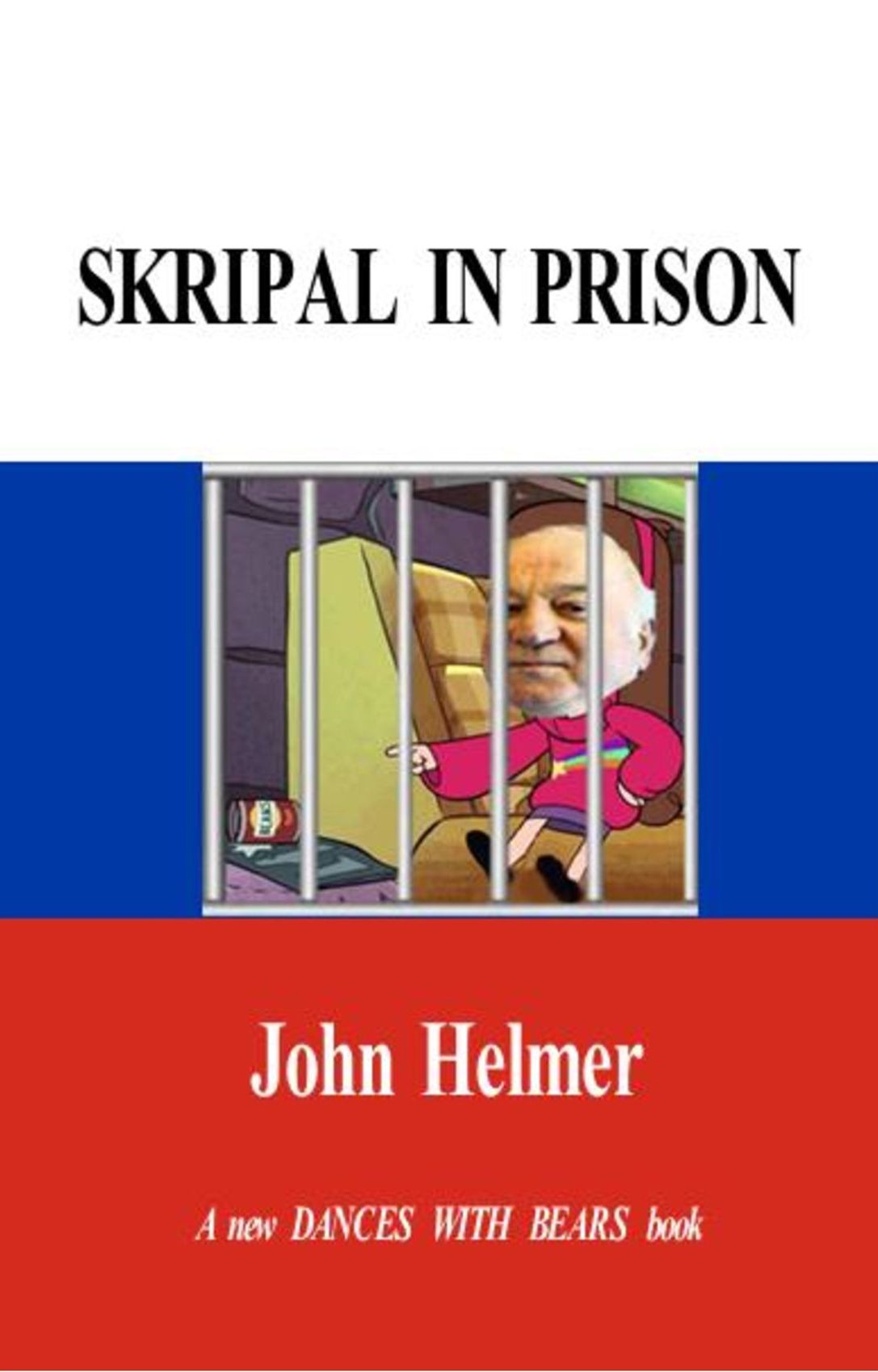
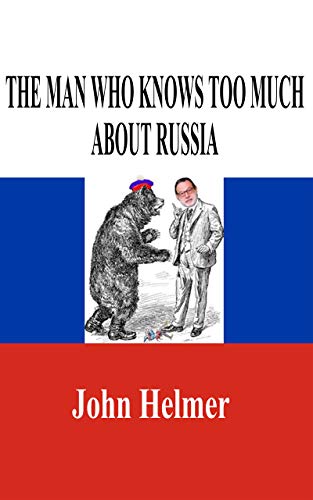
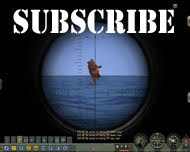
Leave a Reply